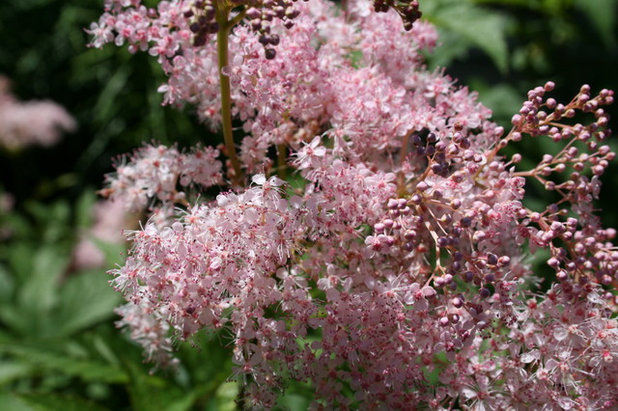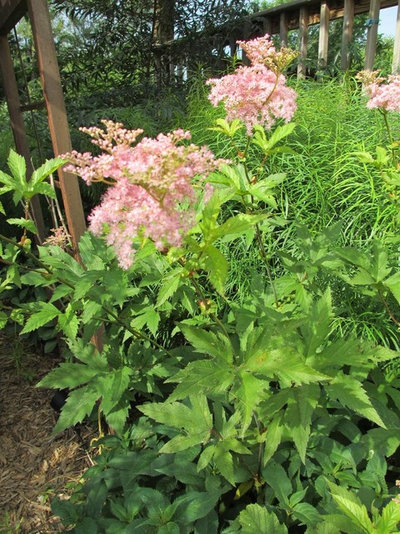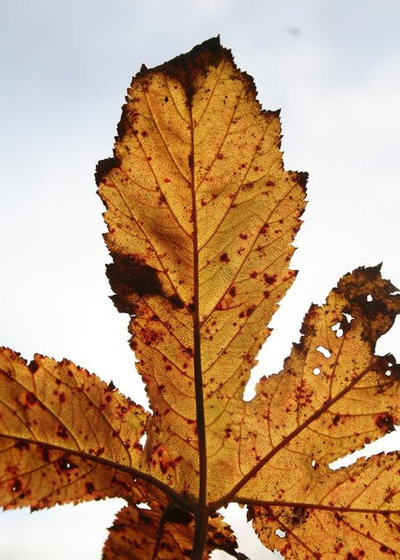Queen of the Prairie is a slowly spreading perennial that loves moisture. Its frothy pink bloom fills the garden with an exquisite perfume for one to two weeks in midsummer. Consider Queen of the Prairie if you’re looking for a colorful and sweet-smelling addition to a rain garden or sensory garden.

Benjamin Vogt / Monarch Gardens
Botanical name: Filipendula rubraCommon name: Queen of the Prairie
Origin: Native to the central and eastern Great Plains, the Midwest, the East Coast and New England
Where it will grow: Hardy to -40 degrees Fahrenheit (USDA zones 3 to 8; find your zone)
Water requirement: Medium to wet clay and loam
Light requirement: Full sun to partial shade
Mature size: 4 to 5 feet tall and 3 to 4 feet wide
Benefits and tolerances: Easy perennial; stabilizes soil; slowly spreads to form colony; rain garden plant
Seasonal interest: Good two-week bloom period in midsummer, strong and sweet scent, unique flowering
When to plant: Spring to fall

Benjamin Vogt / Monarch Gardens
Distinguishing traits. Queen of the Prairie has puffy, cotton candy blooms that are unlike any other flowering perennial. What really makes this plant stand out is the scent — a very sweet rose scent that's better than a rose. If you have a clump of this in a corner or near a path, walking by it will fill your senses with a wonderful fragrance.

Benjamin Vogt / Monarch Gardens
How to use it. Plant in the back of a border or as a massed plant. It makes a perfect backdrop for low plants, but also looks neat among short grasses. Be sure to also enjoy its fall color, as seen above.
Planting notes. Filipendula needs a consistently moist soil, from wet to medium (but not dry at any point). It will let you know if it's too dry by turning crispy brown in a hurry, so use it in a rain garden or low area where water tends to collect for a short period.
It will very slowly spread to form a colony in clay, and will spread moderately in loam, so plan accordingly. It is not overly aggressive, and easily pulls out by hand where you don't want it.





